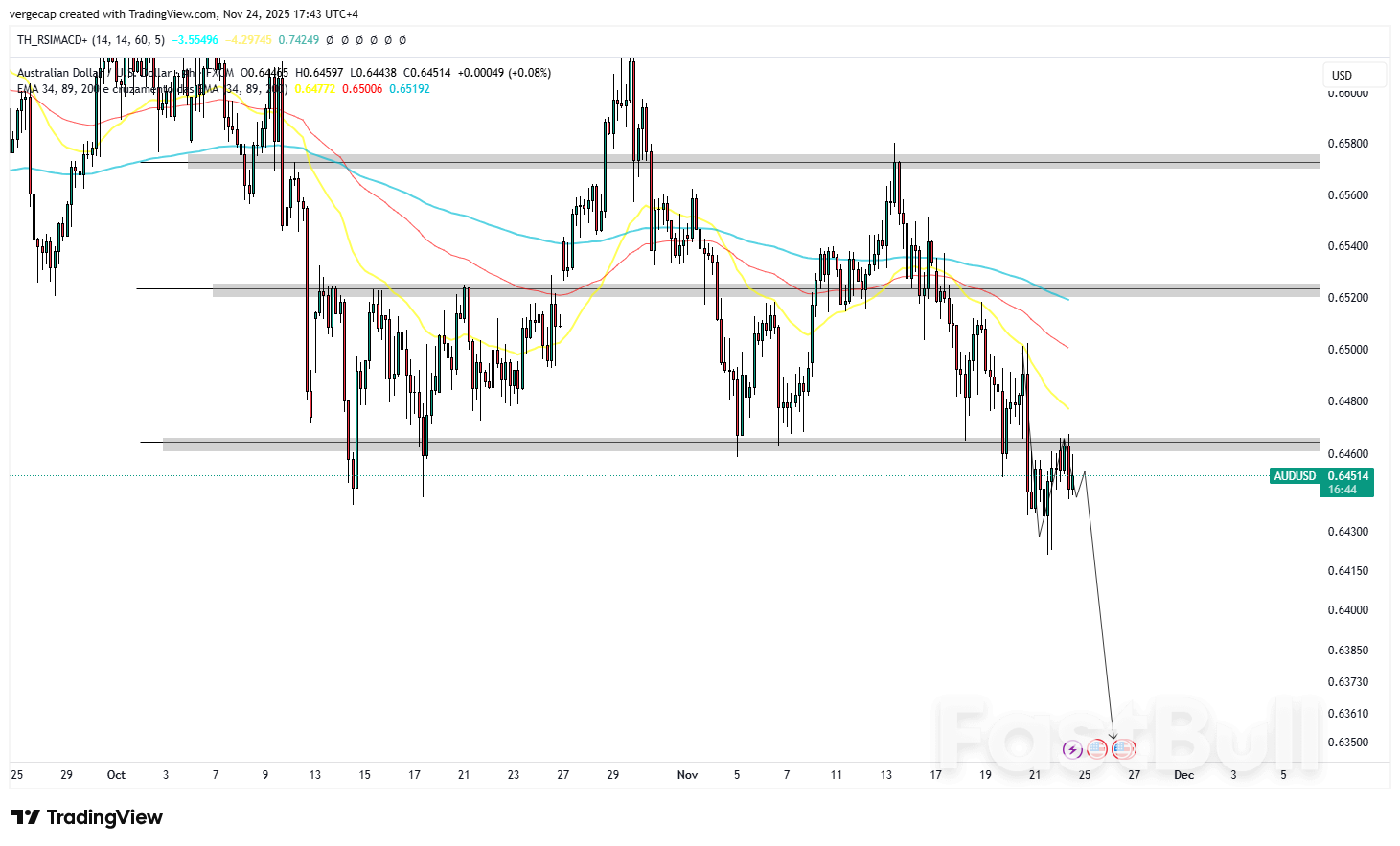The Australian Dollar struggled to capitalize on the generally upbeat market sentiment on Monday, with the currency slipping back toward multi-month lows as geopolitical risks overshadowed last week’s encouraging domestic economic indicators. The AUD/USD pair retreated to session lows near 0.6440 during European morning trading, reversing the modest gains logged in Asia after touching highs around 0.6465. The weakness leaves the currency uncomfortably close to the three-month trough at 0.6429 set on Friday, underscoring how fragile sentiment remains around the Aussie.
The currency’s underperformance was particularly notable given that broader risk appetite was improving across global markets. Instead of benefiting from the softer U.S. Dollar tone or buoyant equity markets, the Australian Dollar found itself among the weakest performers of the day. Traders pointed to escalating diplomatic friction between Japan and China—Australia’s two largest trading partners—as the primary catalyst for the downward pressure. China’s Foreign Minister Wang Yi warned earlier on Monday that Japanese Prime Minister Sanae Takaichi had “crossed a red line” after suggesting Japan would respond militarily if Beijing moved against Taiwan. The sharp exchange injected fresh uncertainty into an already tense regional environment, prompting markets to tilt away from risk-sensitive currencies such as the AUD.
The flare-up comes at a delicate time for Australia, where recent economic data had been painting a cautiously optimistic picture. Last week’s preliminary PMI readings showed that manufacturing activity rebounded into expansion territory in November after contracting in October, while the services sector accelerated for a second straight month. The improving momentum reinforced expectations that the Reserve Bank of Australia will maintain a hawkish bias in its upcoming policy meetings, especially with inflation still running above target. Under normal circumstances, such data would provide at least some durability to the Australian Dollar, but the geopolitical overhang has effectively neutralized the domestic tailwinds.
Meanwhile in the United States, the Dollar’s dynamics remain complicated. The stronger-than-expected S&P Global PMI readings and an improvement in the University of Michigan Consumer Sentiment Index initially bolstered the greenback late last week. However, those gains were short-lived. Dovish remarks from New York Fed President John Williams—who also serves as vice chair of the FOMC—weighed on the Dollar as markets recalibrated their rate-cut expectations. Williams suggested that the Federal Reserve has “ample room” to lower interest rates without jeopardizing progress on inflation, a comment that triggered a notable shift in rate-pricing. According to the CME FedWatch Tool, the probability of a 25-basis-point cut in December surged to 75% from roughly 45% earlier in the week, sending the Dollar broadly lower against its major peers.
Technical Analysis
Despite this softer USD backdrop, the Australian Dollar has been unable to meaningfully recover. From a technical perspective, the pair continues to respect the long-term descending trendline that has guided price action for several months. After failing to break above that resistance last week, AUD/USD formed a fresh lower high—an important structural signal that the broader downtrend remains intact. The latest rejection from the trendline, coupled with the completion of a bearish pullback, indicates that sellers still control momentum. A clear imbalance remains open beneath current prices, suggesting that the path of least resistance may continue to point downward unless a catalyst emerges to shift sentiment.
TRADE RECOMMENDATION
SELL AUDUSD
ENTRY PRICE: 0.6450
STOP LOSS: 0.6500
TAKE PROFIT: 0.6350
Risk Warnings and Investment Disclaimers
You understand and acknowledge that there is a high degree of risk involved in trading with strategies. Following any strategies or investment methodologies is the potential for loss. The content on the site is being provided by our contributors and analysts for information purposes only. You alone are solely responsible for determining whether any trading assets, or securities, or strategy, or any other product is suitable for you based on your investment objectives and financial situation.













